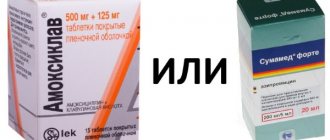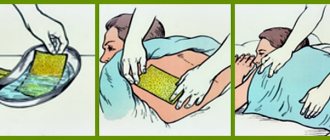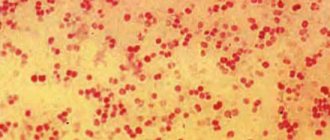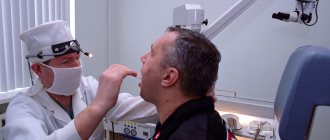ARVI and influenza take their place in ICD 10. These diseases are given several sections in different classes; they can be coded according to clinical and etiological characteristics.
In what cases is influenza diagnosed, in what ARVI, ICD 10 does not give clear instructions . Despite the fact that there are codes designating certain respiratory infections, the basis of the classification is still the clinical picture of the disease, as well as the level of damage.
If it is necessary to clarify the etiological sign of ARVI in the diagnosis, the ICD 10 code can be supplemented with another code reflecting the type of infectious agent. The sections in which these codes are located are in different classes. The ARVI code is in class X, and the pathogen is specified by a code from class I.
The basis for the classification of diseases in ICD 10 is the clinical picture of the disease and the level of damage
The role of classification for medical science
Classifications are needed so that doctors, having received a certain amount of basic knowledge, can communicate with each other about a particular clinical case or laboratory observation. Classifications provide a certain set of terms that are commonly used in the scientific community, and also reflect scientists’ ideas about the relationship between various phenomena.
There are many author's classifications of diseases and various pathological conditions. Some of them are commonly used, some have lost their significance. If the classification of a disease is used by scientists of one scientific school, it may be ignored by scientists of another school, who have their own, in their opinion, more suitable for this case. Some classifications are national in nature, that is, accepted for use by doctors and scientists of the state. There are international classifications.
The most significant is the “International Statistical Classification of Diseases and Related Health Problems (ICD)”. This document was compiled by WHO, is valid in all countries and is periodically revised based on the results of new research. The 10th revision classification is currently used.
This document provides a unified approach to diseases and statistical comparability of data. For this purpose, verbal formulations of diagnoses are indicated by a unique alphanumeric code. Any disease has its own code according to ICD 10, ARVI in adults and children is no exception. The use of these codes for statistical processing of morbidity information is mandatory for doctors.
Rules for diagnosing acute respiratory infections, acute respiratory viral infections, acute respiratory infections or influenza
Despite the fact that the ICD 10 code is mandatory for ARVI statistics, the verbal formulation of the diagnosis is still used to describe a clinical case in practice. Verbal formulation makes it possible to most fully and comprehensively reveal the nature of the pathological process in each specific case. It can reflect data on the severity of the disease, the nature and severity of the course, the clinical variant, as well as other important information. If only the ICD 10 code is used, the diagnosis of ARVI does not reveal some of the characteristics, such as severity.
Severity is one of the symptoms of ARVI, although it is not prescribed in ICD 10
When indicating a diagnosis of upper respiratory tract infection, codes from class X, block J00 - J06 are used. For verbal formulation, different abbreviations can be used - ARI, ARI, ARVI, influenza. The doctor, using one term or another, reflects his idea of the nature of the disease that has affected the patient:
- If the term ARI (acute respiratory infection) is used, this means that there are signs of respiratory damage of an infectious nature. It is obvious that there is some causative agent of the disease, but it has not been identified either laboratory or clinically. It could be a virus, bacteria or other infectious agent. ARVI is a component of ARI; according to ICD 10 in adults and children, these diseases are coded in block J00 – J06 of class X with the addition “NOS”. “NOS” means “Not Otherwise Specified.” The verbal formulation allows the use of the word “unspecified”, “unspecified etiology”. For example: ARI, pharyngitis of unspecified etiology. Or the etiology is being clarified, but the infectious agent is not viral in nature. If it is streptococcus or staphylococcus, then the diagnosis is supplemented with a code from section B95, if another bacterium is B. These are codes from class I, block B95 - B97.
- ARVI . Stands for acute respiratory viral infection. In ICD 10, ARVI is coded in the same sections as ARI (J00–J06). The difference is that if the etiology of the disease is established, the diagnosis can be supplemented by the code of section B97 from class I, which lists infectious agents of a viral nature. Additional codes are not used as a primary diagnosis; they can only supplement the main one if it is necessary to clarify the etiological factor.
- ARI (acute respiratory disease). This diagnosis is now used less frequently than before. In theory, it means the same thing as the diagnosis of ARI, but ARI more accurately reflects the typical infectious etiology of the lesion. Theoretically, the diagnosis of acute respiratory disease may include an acute illness caused by a non-infectious agent (for example, allergic). But this has no practical application, since each non-infectious disease of the respiratory tract has its own category. In section J00 – J06 they may be marked “excluded” with a link. The link goes to the corresponding ICD 10 disease codes; ARVI and ARI are not indicated in the diagnosis for these diseases. For example, allergic rhinitis. It is mentioned under J00 as excluded with reference to code J30 from block J30 – J
- Influenza - the ICD contains a special section dedicated to this disease. This is a separate block of the same X class - J10 - J18 (Influenza and pneumonia). If there are clear clinical signs of influenza infection or laboratory confirmation of it, then the diagnosis of ARVI is no longer used; the ICD code for children and adults is then selected J10 or J11 (Influenza). Section J10 includes cases where the disease is caused by an identified influenza virus, and J11 - an unidentified one. If the diagnosis is formulated verbally, then various clinical manifestations and severity of influenza may be indicated, while the ICD groups all options into several sections (with respiratory manifestations, with other manifestations, influenza pneumonia). The exception is influenza meningitis, which is included in a separate section - G0.
It should be noted that if damage to the respiratory tract is caused by a specific pathogen or causes a disease with a specific picture, then this disease is indicated in the appropriate section (for example, scarlet fever - A38 or herpetic pharyngitis - B00.2).
Using the ICD 10 ARVI classification
ARVI ICD 10 is an acute respiratory viral infection that affects the upper respiratory tract and has, regardless of the specific pathogen, a similar clinical picture. To simplify the diagnosis and further treatment of such infections, appropriate classifications have been adopted. We will talk about ICD-10, according to which there are about a dozen different types of ARVI.
More on the topic:
- What is the difference between acute respiratory infections, acute respiratory viral infections and influenza: features and differences of diseases
- Treatment of ARVI and colds in infants and children according to Komarovsky
- What is the difference between the symptoms of influenza and ARVI?
- Prevention of ARVI and influenza in children
Classification problem
The International Classification of Diseases 2010 (abbreviated ICD-10) is a generally accepted classification of various diseases, according to which it is customary to distinguish between different types of acute respiratory and viral infections. ARVI according to ICD-10 includes various diseases; they have the letter index J and numeric indicators. The use of such an international classification of diseases can significantly simplify diagnosis and subsequently improve the quality of treatment.
ARVI - briefly about the disease
Acute respiratory viral infections are caused by various pathogenic viruses that can enter our body through airborne droplets and quickly infect the body. Such a viral infection can affect the nasopharynx, leading to a cough, runny nose, affect the trachea, and so on. In each specific case, the symptoms of this disease, forms of diagnosis and method of treatment depend on its specific form and causative agent. It should be noted that there are viral diseases that can be easily treated at home, while other severe forms require immediate hospitalization of the patient.
Rules for diagnosing ARVI
The diagnosis is made on the basis of a virological study. A smear is taken, which allows you to isolate a specific virus, after which it is possible to make an accurate diagnosis. We also note that it is possible to make a diagnosis based on the existing epidemiological history. The main symptoms include the following:
- The appearance of nasal discharge and/or nasal congestion.
- The appearance of a cough and sore throat.
- Pain when swallowing saliva or food.
- Mild intoxication.
- Inflammation of the sublingual space and vocal cords with the larynx.
Good to know: Rash due to ARVI
Orville ICD 10 code
ARVI belongs to the ICD 10th class of diseases, and has indices from J 09 to J 18. Also, this category group may include pneumonia and influenza, acute respiratory infections of the upper and lower respiratory tract. All codes of such diseases, approved by the international classification and when described, are indicated in the patient’s medical record.
Formulation of diagnosis according to ICD 10
According to the current classification of diseases ICD-10, ARVI is a group of diseases that are characterized by damage to numerous parts of the respiratory tract. In this case, the patient experiences catarrhal and respiratory symptoms, depending on the specific form of the disease. In most cases, doctors do not distinguish one or another form of the disease, and when making a diagnosis, indicate the code according to ICD 10. However, in the presence of severe forms of this disease, including adenoviral infection, the patient is required to be admitted to a hospital and receive appropriate competent treatment.
Sick leave for ARVI
The period for which sick leave is issued for ARVI ICD-10 directly depends on the form of the virus and the severity of symptoms. Usually doctors issue a so-called average sick leave, which is valid for 3–4 days. During this time, the patient must undergo tests, which will allow the specialist to correctly identify the specific pathogen.
During the first 3 days, appropriate antiviral and symptomatic treatment is carried out, and in most cases this period is sufficient to suppress the infection. If the patient does not show any improvement, or a severe form is established, the sick leave can be extended for up to a week or more.
We recommend reading:
- What is the difference between acute respiratory infections, acute respiratory viral infections and influenza: features and differences of diseases
- Quick treatment of ARVI at home
- How to treat ARVI symptoms in an adult: medications and treatment methods
- Treatment of ARVI and colds in infants and children according to Komarovsky
- What is the difference between the symptoms of influenza and ARVI?
- Prevention of ARVI and influenza in children
Topical diagnostics
In order to correctly formulate a diagnosis in accordance with ICD 10, ARVI in children and adults must indicate the location of the lesion.
Nasopharyngitis is one of the clinical forms of ARVI according to the ICD
In accordance with the anatomical area in which the pathological process is most pronounced, the ICD of ARVI is divided into the corresponding clinical forms:
- Nasopharyngitis (J00). With this variant of the disease, inflammation of the mucous membrane of the nose and pharynx is determined. Depending on the stage, swelling of the nasal mucosa is observed, accompanied by a feeling of stuffiness, or nasal discharge of a watery, mucous or purulent nature. As well as a sore throat and unexpressed cough.
- Sinusitis (J01). This is an inflammation of the mucous membrane of the paranasal sinus (or several) of the nose. With this localization, one- or two-sided nasal congestion, mucous or mucopurulent discharge from the nasal passages, one-sided headache, as well as other, less specific symptoms are observed.
- Pharyngitis (J02) – isolated inflammation of the mucous membrane of the pharynx, without affecting the nose.
- Tonsillitis (J03). Tonsillitis. This clinical form is also called tonsillitis. But the term sore throat is more often used in typical cases of the development of a bacterial purulent infection, although viruses and fungi can be the etiological factor.
- Laryngitis and tracheitis (J04). These forms of ARI are characterized by damage to the mucous membrane of the larynx (with vocal cords) and trachea. With laryngitis, hoarseness of voice, cough, and frequent barking timbre are observed. Tracheitis is accompanied by a feeling of rawness in the sternum, as well as a cough, which is nonproductive at the beginning of the disease, and later with sputum.
- Obstructive laryngitis and epiglottitis (J05). This is an inflammation of the larynx and epiglottis, accompanied by narrowing of the airways. They manifest themselves as shortness of breath, spasmodic cough, and with obstructive laryngitis there may be hoarseness.
- Upper respiratory tract infections of multiple and unspecified localization (J06). If there are signs of damage to several parts of the upper respiratory tract, then the disease is classified with this code.
Allergic rhinitis
This disease is characterized by the formation of inflammation in the nasal mucosa. Symptoms occur when a person comes into contact with an irritant, most often plant pollen. However, there can be many allergens . The clinical picture is characterized by the following symptoms:
- swelling of the mucous membrane;
- difficulty breathing;
- sneezing;
- lacrimation;
- serous nasal discharge;
- itching in the nose area.
In ICD 10, allergic rhinitis is located in the class of diseases of the respiratory system. Further, the classification branches into sections, and rhinitis is included in other pathologies of the upper respiratory tract.
Code J30 includes vasomotor and allergic inflammatory processes.
In this case, the disease, which occurs as an allergy, is further divided into several points. A disease that is caused specifically by plant pollen is recorded separately. It is under code J30.1 and includes hay fever, hay fever, and so on. Item J30.2 includes seasonal allergic reactions not covered in the previous code.
Other allergic rhinitis includes inflammation, which is not tied to the season . Here the code is represented by the following symbols: J30.3. The last item highlights an unspecified allergic reaction, which implies the absence of a clearly identified allergen, recorded J30.4.
ARVI with intestinal manifestations
It is quite difficult to differentiate the intestinal syndrome during ARVI and the manifestation of an intestinal infection, since both diseases occur with diarrhea and fever. The difference is that intestinal manifestations of ARVI are accompanied by catarrhal syndrome (runny nose, cough, sore throat, as well as other symptoms).
In ICD 10, ARVI with intestinal syndrome is coded in class I. It belongs to the block of intestinal infections. Code A08 – viral and other specified intestinal infections. When the exciter is installed, it is possible to clarify the code with an additional digit after the dot. For example, A08.2 is adenoviral enteritis.
In ICD 10, ARVI with intestinal syndrome is coded in class I
However, damage to the gastrointestinal tract due to influenza is excluded from this category. If there is clinically or laboratory confirmed influenza with symptoms of gastroenteritis against its background, then the code is selected from class X, block J10 - J18 (Influenza and pneumonia). If the virus is identified, code J10.8 is used (Influenza with other manifestations, the virus is identified), if the diagnosis is established clinically without laboratory confirmation, then code J11.8 (Influenza with other manifestations, the virus is not identified).
Classification by ICD-10 code
The etiology of acute rhinitis manifests itself in an intense form with copious discharge from the nasal passages. Sometimes the process affects exclusively the passages themselves, and sometimes the paranasal sinuses are also involved.
As a rule, the latter is already classified as a complicated or advanced form. ICD acute rhinitis - J00.
Types of acute rhinitis
Acute rhinitis is divided into several types, including:
- Allergic, manifested both seasonally and year-round in the form of clear discharge, sneezing, tearing, dry throat, sore throat, and so on.
- Vasomotor also manifests itself, like allergy, but always has a time-limited manifestation, for example, during the flowering period of a plant or as a reaction to a specific irritant - cold, dryness, and so on.
- Viral rhinitis is provoked by viruses and manifests itself similarly to allergic rhinitis. At the same time, symptoms of a cold, flu or other acute respiratory infection often develop in parallel. Catarrhal inflammation of the mucous membranes is present.
- Hypertrophic is manifested to a greater extent by proliferation followed by thickening of the mucous tissue in the nasal passages, which leads to difficulty breathing through the nose;
- Atrophic is the opposite of the previous one and leads to thinning of the mucous membranes, as well as to degeneration of bone tissue. It appears in the dry type without discharge, and in the ozen type - with purulent discharge and a characteristic odor;
- Infectious bacterial or fungal is manifested by the release of secretion with purulent contents.
Often, one type of rhinitis, for example, viral, can develop into another - bacterial or fungal.
Features of acute rhinitis:
Formulating a diagnosis in accordance with the classification
Establishing a detailed diagnosis in verbal form, the doctor indicates the underlying disease with a decoding of the variant of the course, degree of severity, severity, as well as other criteria traditionally used by clinical classifications. In addition, complications of the underlying disease and other concomitant diseases that the patient currently has, and which may be in a state of exacerbation or remission, are indicated.
When formulating a diagnosis, it is very important to correctly establish cause-and-effect relationships, namely, which pathological process was primary and which was secondary. If there are two or more competing diseases, it is necessary to determine which of them determines the severity of the disease at the moment.
It is important to determine the primary and secondary pathological process
This is very important for the correct preparation of statistical reporting. The diagnosis can have a double code, and in the presence of complications, a triple one (if formulated in accordance with ICD 10). But statistically, these diagnoses are taken into account separately: the main one, complications of the main one and concomitant ones. The correct use of ciphers is necessary to transmit reliable information to accounting organizations, since decisions are subsequently made based on this data.
Source
Symptoms
The general nature of the disease is cyclical. In one cycle, there is an incubation period (1-5 days), an acute period (3-7 days, in case of severe disease - more than 7 days) and a convalescence period - from lat. Reconvalescentia - recovery (4-5 days). Rotavirus infection is characterized by an acute onset - vomiting, a sharp rise in temperature, and diarrhea, often with very characteristic stools - on the second or third day, gray-yellow and clay-like. In addition, most patients develop a runny nose, redness in the throat, and experience pain when swallowing. During the acute period, there is no appetite and a state of loss of strength is observed. Long-term observations have shown that the largest outbreaks of the disease occur during or on the eve of an influenza epidemic, for which it received the unofficial name “intestinal flu.” Feces and urine are very similar in appearance to the symptoms of hepatitis (light stool, dark urine, sometimes with flakes of blood). The disease is considered a childhood disease because the bodies of adults are more protected from rotaviruses. In an adult, the acidity of gastric juice is higher and the amount of secretory IgA produced is higher. In an adult, RI may manifest itself as a mild intestinal disorder, so the infected person may not realize that he is sick. Often the disease is completely asymptomatic. Usually, if there is an infected person in a family or group, then within 3-5 days the rest of the family begins to get sick one by one. It is possible to prevent infection from a carrier of infection if the immune system is active. The most common clinical course of the disease is enteritis and gastroenteritis, secondary lactase deficiency.
Causes
Rotaviruses (lat. Rotavirus) are a genus of viruses from the family Reoviridae, similar in morphology and antigenic structure. Like other members of this family, rotaviruses have double-stranded, fragmented RNA. The virus genome contains 11 fragments, which are surrounded by a clearly defined three-layer protein shell (capsid) with icosahedral symmetry. The appearance of the particles resembles “a wheel with a wide hub, short spokes and a clearly defined rim,” which is why they got their name (Latin Rota - “wheel”). The diameter of viral particles is from 65 to 75 nm.
Treatment
The main goal of treatment is to combat the effects of infection on the body: dehydration, toxicosis and associated disorders of the cardiovascular and urinary systems. First of all, rehydration therapy is used in treatment; sorbents (activated carbon, dioctahedral smectite, attapulgite) may be prescribed. There are no effective antiviral drugs to combat active rotavirus infection. During the treatment - a strict diet: porridge with water, apple compote. Avoid dairy products until complete recovery. WHO recommends preventive vaccination as an effective remedy against rotavirus infection. Probiotics such as Lactobacillus rhamnosus and Lactobacillus casei may be helpful in treating diarrhea caused by rotavirus, especially in young children and infants, according to the American Gastroenterological Association.
Clinics for treatment with the best prices
Price
Total: 501in 31 cities
| Selected clinics | Phones | City (metro) | Rating | Price of services |
| JSC "Medicine" in 2nd Tverskoy-Yamsky Lane | +7(495) 152..show Appointment +7(495) 152-59-88+7(495) 229-00-03+7(495) 775-74-78 | Moscow (m. Mayakovskaya) | rating: 4.4 | 18430ք |
| Polyclinic No. 166 on Domodedovo | +7(495) 152..show+7(495) 152-58-65+7(495) 392-01-54 | Moscow (metro station Domodedovskaya) | — | 4850ք |
| KB No. 85 on Moskvorechye | +7(499) 782..show+7(499) 782-85-85+7(926) 010-84-87+7(499) 324-70-15+7(499) 324-86-65 | Moscow (m. Kantemirovskaya) | — | 5500ք |
| Military Medical Academy named after. S.M.Kirova | +7(812) 292..show+7(812) 292-34-35+7(812) 292-32-86 | St. Petersburg (metro station Lenin Square) | — | 6280ք |
| CDC NMHC named after. Pirogov in Gagarinsky Lane | +7(499) 464..show+7(499) 464-03-03 | Moscow (metro station Smolenskaya) | — | 6900ք |
| CDC Izmailovsky NMHC named after. Pirogov | +7(499) 464..show+7(499) 464-03-03 | Moscow (metro station Pervomaiskaya) | — | 6900ք |
| MEDSI on Prechistenka | +7(495) 739..show+7(495) 739-53-67+7(495) 152-55-46 | Moscow (metro Park Kultury) | — | 7880ք |
| KB No. 119 | +7(499) 519..show+7(499) 519-39-17+7(495) 575-62-68+7(495) 575-61-95+7(495) 575-60-63 | Moscow (metro station Pyatnitskoe highway) | — | 4620ք (90%*) |
| Central Design Bureau No. 2 of JSC Russian Railways | +7(495) 727..show+7(495) 727-00-03+7(499) 187-08-17 | Moscow (metro station Rostokino) | — | 4749ք (90%*) |
| City Clinical Hospital No. 31 on Lobachevsky | +7(499) 936..show+7(499) 936-99-89+7(499) 432-96-53 | Moscow (metro Prospekt Vernadskogo) | — | 5150ք (90%*) |
| * — the clinic does not provide 100% of the selected services. More details by clicking on the price. | ||||
Source
All people are susceptible to the same ailments, so special techniques have been developed to study the causes of illness, injury and death. This allows attention to be directed to the root cause, which makes it easier to find cures and solutions to the disease. And thanks to statistical data, researchers and medical laboratories know which diseases are lacking quality medicines.
It also makes it possible to alleviate logistical problems by delivering to different countries those drugs that meet the needs of residents. The international classification of diseases has a particularly great influence in determining seasonal exacerbations of ARVI ICD-10.
Description and role of ICD-10 disease classification
The more often people from different communities came into contact, the more often misunderstandings arose between doctors. Indeed, depending on the region and language, the name and treatment of the disease differed. Therefore, attempts to create the first classification were made back in the 18th century.
A document created at the end of the 19th century became widespread. Initially, it included only diseases that lead to death, which greatly facilitated statistical studies in different countries. But starting in 1948, the list included diseases that were not fatal.
The classification is grouped according to the causes of the malaise or by location. It is important to know that WHO organizes a revision of the list of diseases every ten years in order to more fully and conveniently distribute diseases into different groups. The latest version (ICD-10) was adopted in 1990, and began to be used in 1994. At the moment, the statistical organization under the WHO is revising the list to include new diseases, and a more complete systematization of existing ones. Most often, among the statistics sent to WHO, various forms of ARVI ICD-10 appear.
The International Classification of Diseases is published in 3 volumes:
- The first volume contains a complete list, even with rare pathologies.
- The second volume contains a list of instructions for the correct use of the classification.
- The third volume allows you to quickly find a disease code by its name, thanks to the alphabetical arrangement of all categories.
Due to the standardization of diseases, there are fewer unexplained causes of death or other pathological conditions. At the same time, often diseases that were previously diagnosed everywhere, with a more thorough study, belong to different groups, which gives a more accurate picture of deviations in the health of the population. Standardization of diseases allows for a complete and accurate determination of the causes of diseases, which makes it possible to select the most effective treatment.
One of the most important impacts of disease codes was on children's healthcare, allowing a significant reduction in mortality. Previously, the mortality rate among children under 5 years of age was about 40%, and according to the latest data, the global figure is at 7.37%. At the same time, countries with developed healthcare account for only 0.7%.
According to WHO, 43% of deaths in lagging countries are due to preventable causes. This significant decline in rates over a century demonstrates the usefulness of one classification of diseases.
What is acute respiratory infection
Not everyone knows what acute respiratory infections are and what threat it poses to some people. Acute respiratory infections are a set of respiratory tract diseases that cause unpleasant symptoms and sometimes result in death. Patients at risk (over 60 years of age, children or pregnant women) should be vaccinated regularly, and if signs of acute respiratory infections appear, seek medical help.
Decoding
The meaning of acute respiratory infections is “acute respiratory diseases,” which means a wide range of respiratory tract diseases that can be divided into upper and lower. The upper respiratory tract includes the nose and sinuses, mouth, throat and larynx, while the lower respiratory tract includes the trachea and lungs.
The lungs consist of bronchi - the smallest airways - bronchioles and alveoli, as well as lung tissue (parenchyma). The airways direct air to areas of the lungs where oxygen is absorbed from the air. In the opposite direction, carbon dioxide is removed. Respiratory diseases can impede these processes, consequently weakening the entire body.
Respiratory diseases can occur simultaneously in different parts of the respiratory tract. The most common condition is inflammation of the airways. Acute respiratory diseases include pharyngitis, influenza, tonsillitis, laryngitis, bronchitis, pneumonia and sinusitis. Allergies may also be considered as a cause.
Is there such a diagnosis?
The diagnosis of “ARD” does not exist, since it is a general term to describe the entire set of acute diseases of the upper and lower respiratory tract. However, the methods of treating infectious, allergic or inflammatory diseases of the lower or upper respiratory tract are largely similar.
How is it coded in the ICD?
There is no separate code for acute respiratory infections in ICD-10. In the International Classification of Diseases, 10th revision, acute respiratory diseases are distinguished by various codes depending on the etiology, for example, acute infectious diseases of the upper respiratory tract - J00-J06.
In the ICD 11 version, the spectrum of diseases that fall under the group name ARI is represented by numerous codes starting with the letters CA.
How to distinguish allergies from colds
It is difficult to distinguish an allergic reaction from a cold visually or by symptoms. If an allergy is established, taking antihistamines on a regular basis brings relief to patients. For colds, they relieve symptoms only in the first two days of treatment. In any case, it is recommended to consult a doctor if in doubt.
The difference between ARVI and ARI
Acute respiratory viral infections (ARVI) are a special case of acute respiratory diseases. In this case, the root cause is a viral pathogen - influenza virus, parainfluenza, rhinovirus, coronavirus and others.
Incubation period
The incubation period for acute respiratory infections before the onset of symptoms varies among different pathogens:
- rhinoviruses and group A streptococci can be incubated for 1-5 days;
- influenza and parainfluenza - within 1-4 days;
- respiratory syncytial virus (RSV) - within a week;
- whooping cough - for 7-10 days or even 21 days before symptoms occur;
- Epstein-Barr virus (EBV) – 4-6 weeks.
Most symptoms, including local swelling, erythema, secretions, and fever, are the result of the immune system's inflammatory response to invading pathogens and toxins.
Is this disease contagious?
Viruses most often spread from person to person. Viral agents include a huge number of serotypes that undergo frequent changes in antigenicity, which pose challenges to immune defense. Viral acute respiratory infections are contagious.
In turn, bacterial infections develop as a complication of a viral disease or as a result of hypothermia. They are called opportunistic and in themselves they are not contagious. Bacteria can also be absolute pathogens: Staphylococcus aureus is one of these. Such bacterial infections are contagious.
Whether acute respiratory infections are contagious or not in each specific case depends on the pathogen.
Pathogens resist destruction through a variety of mechanisms, including the production of toxins, proteases and bacterial adhesion factors, and the formation of capsules that resist phagocytosis. A specialist will tell you in more detail what kind of illness this is - acute respiratory infections - at your appointment.
Clinical forms of ARVI
Acute respiratory viral infections are grouped diseases of the respiratory tract, occurring in an acute form, caused by pathogenic viruses.
This is the most common disease caused in humans by viruses. During off-season outbreaks, the share of this diagnosis compared to others reaches 30-40%.
Most often, such diseases have similar symptoms and paths, so in everyday life it is rare to hear the exact ARVI code according to ICD 10, due to the inability to accurately determine the cause of the disease without being a doctor.
Often, for the same diagnosis, different medications are prescribed, because doctors focus on a more precise methodology when selecting drugs. Therefore, for an accurate diagnosis, it is important to seek qualified help.
But before we consider how ARVI is designated according to ICD 10, it is necessary to understand that all diseases can be in several stages.
They are conventionally divided into 3 areas:
- Mild form of the disease.
- Moderate disease.
- Severe form of the disease.
At the same time, moderate and severe diseases can cause complications that arise at the site of the lesion or other organs. Therefore, an additional diagnostic point is to determine the course of the disease:
- Without complications, when the disease passes as usual, and after recovery there are no impaired functions in the body.
- With complications, when the disease affects the body too much, causing some of its functions to be impaired.
The causes of ARVI code according to ICD 10 are any viruses that, when they enter the human body, are localized in the upper respiratory tract.
Classification according to ICD-10
This term refers to a whole category of pathologies with general symptoms that have certain features:
- they are all infectious in nature;
- pathogens enter the body through airborne droplets;
- First of all, the organs of the respiratory system are affected;
- Such diseases develop rapidly and do not last long.
According to ICD-10, such pathologies are coded as follows: J00-J06. Acute respiratory infections of the upper respiratory tract.
To distinguish acute respiratory infections from influenza and sore throat, you need to analyze the clinical picture. So, sore throat is characterized by similar manifestations, but the patient experiences pain when swallowing. Swelling in the neck area also often occurs. The temperature increases to 38-39 degrees and comes down with great difficulty.
Flu appears suddenly. The temperature can be 38.5 degrees. Sometimes it even reaches 40 degrees. This pathology is characterized by chills, cough, and body aches. Often there is severe sweating and nasal congestion without a runny nose. The eyes also become watery and red, and a nagging pain appears in the chest area.
Disease with gastrointestinal dysfunction
In addition to respiratory diseases that occur with high temperature and disruption of the respiratory tract, there are those that affect the functioning of the gastrointestinal tract. ARVI with intestinal syndrome occurs due to one of three types of rotavirus entering the body.
Reproduction of viruses occurs in parallel, due to the fact that both the mucous membrane of the respiratory tract and the intestinal epithelium are suitable for their residence. Therefore, in order to fully recover, it is necessary to use complex treatment aimed at destroying the pathogen both in the lungs and in the gastrointestinal tract.
Due to the fact that two main systems in the body are affected, this disease is considered one of the most severe, especially if the patient is a child. Therefore, at the first signs of illness, you should immediately seek medical help.
According to WHO statistics, about 30 million cases of infection are recorded per year, and due to untimely treatment, 3% of diseases result in death. This is due to the double breeding site, because the amount of virus in the body increases much faster than with other ARVI pathogens.
Mode of transmission and symptoms of the disease
The virus spreads in three ways: when a healthy person comes into contact with a sick person (or in rare cases with a healthy carrier), with objects of the sick person, or with contaminated water (milk).
At the same time, animals cannot be carriers of a virus that can infect humans (the types of virus that infect animals and humans are different). Once in the body, the virus begins to multiply quickly, which is why it destroys special villi in the gastrointestinal tract. This provokes digestive disorders, which leads to the entry into the rectum of a large amount of water, in which large quantities of different salts are upset. This causes severe diarrhea and dehydration, as well as electrolyte imbalance.
Stages of the disease:
- The incubation period, which is asymptomatic for 2 days (in children, in rare cases of good resistance to the virus, is 4 days).
- The acute severe form of ARVI is accompanied by all signs of damage to the respiratory tract and intestines. Lasts from 7 to 10 days.
- The recovery stage is when the convalescent (recovering patient) notices a decrease in symptoms and poor health. Depending on the severity of the disease, reactions to medications and immunity, it can last up to 14 days.
But it is important to remember that this course of the disease passes if a person seeks medical help on time and does not suffer from chronic diseases. Otherwise, a viral infection can cause complications.
This type of ARVI has a code according to ICD 10 J06.8. Therefore, it is necessary to study in more detail the entire classification of ARVI.
Symptoms of acute rhinitis
Depending on the stage of the disease, the patient experiences the following symptoms of AR:
- The initial stage of the disease can last for several hours. The patient begins to feel burning, tickling and dryness in the nasopharynx. Chills, lethargy may appear, and body temperature rises to 37 °C.
- At the second stage of the disease, signs indicating the development of an inflammatory process increase. Clear mucous discharge from the nose appears. They irritate the skin in the area of the nasolabial triangle, causing redness, cracking and swelling of the skin, and a burning sensation. Also, due to swelling of the mucous membrane, the patient's nasal breathing is impaired, and the voice may change and a nasal sound may appear. If the immune system copes with the disease, at this stage the symptoms of a runny nose may disappear.
- The third stage of acute rhinitis is observed 4–5 days after the onset of the disease. The appearance of nasal discharge changes; it acquires a greenish or yellow tint and a thick consistency.
Combination drugs can also be prescribed, which, in addition to the vasoconstrictor, include antiallergic or antibacterial components (Vibrocil, Eden Rino).
In most cases, symptoms completely disappear within 4–10 days from the onset of the disease. In patients with reduced protective functions of the body, AR can last up to four weeks, become chronic, or lead to the development of complications.
With atrophy of the nasal mucosa, the duration of the first and second stages of the disease is reduced, and the third one increases by several weeks. In subacute rhinitis, the patient develops the disease as usual for the first 7–12 days, and then for 3–4 weeks there is nasal congestion, thick nasal discharge and crusting. At the same time, general health remains normal.
In children, the disease can be severe
Acute rhinitis in children can be severe. It is especially dangerous in infants, as it often causes complications. Since the child cannot blow out the secretions that accumulate in the nasal cavity, nasal breathing is disrupted, which affects the general condition and appetite. In older children, acute nasopharyngitis occurs in the same way as in adults.
ARVI designation
Although when communicating with a patient, doctors use the verbal formulation “acute respiratory viral infection,” it is a mistake to assume that this is one disease.
ARVI code according to ICD 10 is J00-J06, with each group consisting of subparagraphs that more accurately characterize a particular disease.
To avoid misunderstandings, the ARVI code is separated by a dot, which distinguishes the main group and clarification.
In this case, the group may contain subparagraphs that do not start with 1. This is due to the fact that some diseases included in it upon adoption were more fully examined and moved to other sections.
Vasomotor rhinitis
Just like allergies, the ICD 10 code for vasomotor rhinitis is represented by a class of diseases of the respiratory system and a section of other pathologies of the upper respiratory tract. The full encoding looks like this: J30.0. The disease has no subparagraphs, as well as clarifications.
Vasomotor inflammation is a pathological process characterized by impaired vascular tone and loss of control over the amount of incoming air.
The vessels regulate the volume based on data on the temperature and humidity of the environment. Unlike an allergic reaction, the main symptom here may not be the appearance of discharge, but, on the contrary, severe dryness of the mucous membrane . In addition, there is nasal congestion, swelling, and pain. This pathology is also characterized by disorders of the general condition:
- headache;
- sleep disturbance;
- loss of appetite;
- weakness;
- increased fatigue.
The disease can be caused by viruses, but sometimes it is associated with a failure of the nervous system. Also among the causes of pathology are: stressful situations, hormonal imbalances, sudden changes in temperature and humidity. In the classification, rhinitis of this nature is included in the allergic section, since it can also be caused by a contact irritant. There is a chronic course of the pathology, but it is quite rare.










